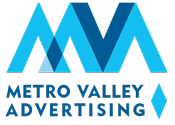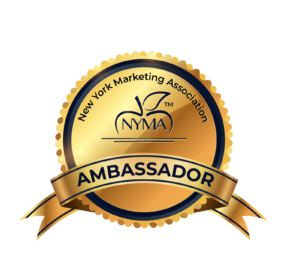Video marketing isn’t a just a trend that will fade. It’s a tactic that continues to grow, whether on YouTube, your favorite social media platform or the Internet. Video marketing is a tool that can help personal injury attorneys generate more leads and build stronger relationships with potential clients. In a competitive business, where trust is critical, video helps you break through the noise and connect on a human level. It is imperative for attorneys to learn how to use video marketing for personal injury advertising.
If you’re not using video in your personal injury advertising, you’re missing opportunities to build credibility, educate your audience, and drive conversions.
What Is Video Marketing?
Video marketing is the use of video content to promote your law firm and reach more injury clients. It is more than just a 30-second TV commercial or intro on your website. Video marketing includes client testimonials shared on social media, explainer videos on YouTube and more. It’s about using sight, sound, and motion to bring your message to life.
Unlike text or still images, video shows emotion. It gives people a chance to see you, hear your voice, and understand your approach. That builds trust and trust is what turns a site visitor into a client.
Why Video Is So Powerful
Video is one of the most effective tools in marketing today. It’s not just because people like watching it. It’s because it helps them understand who you are and how you can help. Some people are visual, others auditory. Video combines both with motion.
According to recent studies, people remember 95% of a message when they watch it in a video. They only remember 10% when reading it as text. That kind of impact makes video a critical tool for lead generation.
Google also favors websites with video. A well-produced video can improve your search ranking and keep people on your page longer. It keeps people your pages longer and it improves user experience. All of which leads to more conversions.
The Types of Videos Personal Injury Attorneys Should Use
There isn’t one right kind of video. Each type plays a different role in your personal injury marketing strategy.
Start with an attorney introduction video. This gives potential clients a feel for who you are and what you believe in. They want to see that you’re knowledgeable but also approachable.
Next, create client testimonial videos. These offer real stories from real people. Social proof works(see last week’s blog!). When potential clients see that others had a good experience, they’re more likely to reach out.
Another valuable tool is the explainer video. Use these to walk through legal processes in plain language. For example, a short clip explaining how contingency fees work or what steps to take after a car crash can clear up confusion and build confidence.
You can also produce short FAQ videos that answer common questions. These are perfect for social media and SEO. They show that you understand your clients’ concerns and are ready to help.
Videos focused on specific case types are also useful. A quick overview of your experience handling motorcycle accidents or medical malpractice cases positions you as a subject-matter expert.
And don’t overlook content that shows your firm’s involvement in the community. A video from a charity event or volunteer day helps people see you as more than just a business. It builds trust and goodwill.
How to DIY Video Content
You don’t need a big budget to get started. Today’s smartphones shoot in high quality. A basic tripod, a ring light, and a quiet room are enough to record clean, useful videos.
If you’re comfortable on camera, record simple answers to common questions. Keep it steady. Speak clearly. Look into the camera. Then use free editing tools like iMovie or CapCut to trim the clip and add captions. These videos work great for your blog, social channels, or email newsletters.
Try recording explainer videos on your own as well. Invest in a small wireless microphone, they are not terribly expensive. And record client testimonials in your office. A great time to shoot those is when clients come by to pick up a settlement check.
DIY video helps you move quickly and test ideas. It’s also a good way to build a habit of creating content.
Why Professionals Make a Difference
While DIY videos have their place, professional production can elevate your image. If your video looks polished and sounds clear, it reflects well on your firm. A professional team will light the room properly, capture clean audio, and edit the video to hold attention.
This matters most for TV commercials, attorney profiles, and firm overviews. These are cornerstone videos in your personal injury advertising. Poor sound or shaky footage can make you look second rate. Professional production ensures that your message comes through clean and strong.
You don’t have to go all-in from the start. But for key videos, the investment is worth it.
Where to Host and Share Your Videos
Video should live everywhere your clients are. Start with your website. Add your attorney introduction to your homepage. Place explainer videos on service pages. Use testimonials on your contact or “Why Choose Us” page.
YouTube is another important platform. It boosts SEO and gives your firm a stronger online footprint. It’s also the second-largest search engine after Google. If people are searching for answers, your videos can help them find you.
Social media is key for lead generation too. Facebook, Instagram, LinkedIn, and even TikTok support video posts. Short, informative clips can drive awareness and build followers over time.
Another platform for video is programmatic advertising. Often, if you want to watch a video online you need to watch a commercial first. Because those ads are served over the internet we can target by demographics, geography, behaviors etc. And they are often unskippable ads.
You can also use video in paid search landing pages and email campaigns. A short video on a Google Ads landing page can increase conversions by up to 80%. That’s a major lift for your personal injury marketing results.
Planning a Smart Video Strategy
Start by asking what you want video to do for your firm. Do you want more calls? More web traffic? Better engagement?
From there, outline your client journey. What do potential clients need to know at each step? An intro video may work best at the top of the funnel. Explainer videos are great for the Engagement phase. FAQs and testimonials help when people are deciding who to call.
Create a simple content calendar. Aim to release one video a month. Repurpose content when you can. A 3-minute explainer can be cut into a 30-second Instagram reel and a blog post.
Always measure performance. Look at views, watch time, click-through rates, and most importantly, leads generated.
How to Integrate Video into Your Marketing Plan
Video works best when it supports your full personal injury advertising strategy. It’s not a stand-alone tool. Think of it as part of your media mix.
Use video in paid search to warm up traffic. Pair it with display or OTT campaigns to stay top of mind. Put videos in your remarketing ads. These build trust and reinforce your brand.
You can also use video to support SEO. Embed videos in blogs. Optimize YouTube titles and tags. Share videos through your Google Business Profile.
Over time, a consistent video presence strengthens your brand and improves lead generation. You’re building a library of content that can work for you 24/7.
How to Use Video Marketing for Personal Injury Advertising
Video marketing helps personal injury attorneys connect with more potential clients. It builds trust. Video explains complex topics. It gives your firm a face and a voice. And therefor you need to know how to use video marketing for personal injury advertising.
You don’t need a big production team to start. But you do need a plan.
Video is no longer optional in personal injury marketing. It’s essential for generating leads and staying competitive. So, start where you are. Keep it simple. And keep showing up on camera.
If you want your marketing to work harder, it’s time to step in front of the camera.



